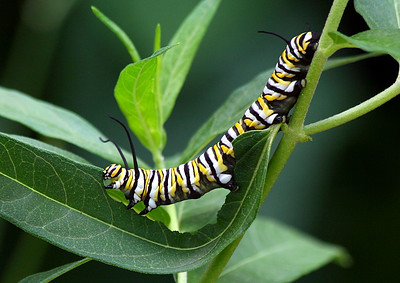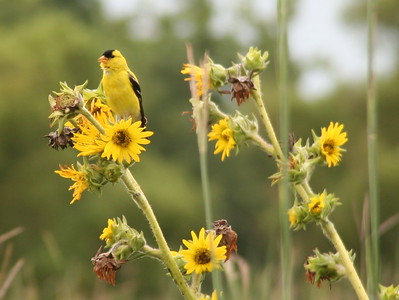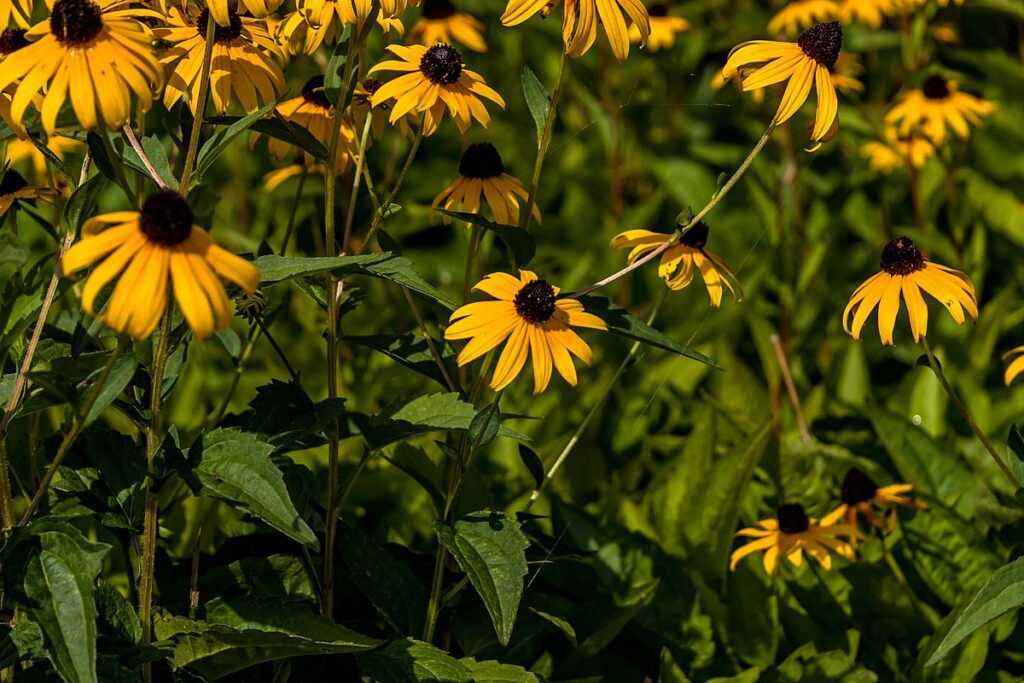We plant gardens for many reasons, from simply enjoying their beautiful blooms to helping increase our property values. When we plant native, however, we get to enjoy a myriad of additional benefits that can have a major impact on our local ecosystems.
So first of all, what exactly makes a plant native? Simply put, it’s a plant that occurs naturally in a particular region or habitat without having been introduced by humans. The National Wildlife Federation adds that “native plants have formed symbiotic relationships with native wildlife over thousands of years, and therefore offer the most sustainable habitat.”
Vanishing Ecosystems
Prioritizing native plants has become an especially important cause due to the staggering losses of “wild” land for development in the last century. Some 150 million acres of land in the continental United States have succumbed to urban sprawl.
With all of this disappearing habitat, our isolated national parks and forests aren’t nearly enough to sustain biodiversity. Because of this, there’s a movement known as Homegrown National Park (HNP) which argues that our own yards are the best option for stopping these crises.
86% of the land east of Mississippi is privately owned, and most suburban yards are made up primarily of pesticide-laden turfgrass lawn with a few nonnative ornamental plants thrown in near the house. By turning just some (not all!) of that lawn into native plant gardens, we can start to rebuild our lost ecosystems and reconnect networks of habitat.
HNP co-founder Doug Tallamy explains the urgency of the mission: “We are at a critical point of losing so many species from local ecosystems that their ability to produce the oxygen, clean water, flood control, pollination, pest control, carbon storage, etc, that is, the ecosystem services that sustain us, will become seriously compromised.”
Protecting Pollinators
One of the most compelling elements of this pollination. Pollinators are an crucially important part of the food chain and their declines can have devastating effects on all other parts of the ecosystem up to and including humans.
In fact, “three-fourths of the world’s flowering plants and about 35 percent of the world’s food crops” are reliant on animal pollinators, and “one out of every three bites of food we eat exists because of animal pollinators like bees, butterflies and moths, birds and bats, and beetles and other insects.” Their presence also increases crop yields and leads to larger and more flavorful fruits and vegetables.
In the US, more than 150 crops depend on pollinators, including practically all fruits and grain, totaling some $10 billion in value per year (source: USDA). These pollinators, however, from managed honeybees to wide varieties of native bees, butterflies, moths and more, are in steep decline and many species are now endangered.
Studies have estimated that 40% invertebrate pollinators are already threatened with extinction and the situation gets more dire each and each day. Any individual, however, can help reverse these declines and do so without major efforts or a huge patch of land to work with. Planting even a small native plant garden can do a large amount of good in protecting these vitally important parts of our ecosystem.
Natives vs. Nonnatives for Pollinators
Some wonder how important the “native” aspect actually is. They may point to the fact that pollinators can still get nectar from nonnative flowers, and there is certainly truth to this. We often see bees buzzing on flowers that originate from all over the world, so does native status really matter that much?
In short, yes it does. For one, seeing some insect activity doesn’t prove that a variety of beneficial insects are using them, especially crucial native bees and butterflies of which a staggering percentage are in steep decline. (Even well-known, popular species like the monarch butterfly was listed as endangered in 2022).
Even more important to understand, however, is the fact that nectar from the flowers is only one part of the equation: it’s also crucial to have plants that caterpillars eat before becoming butterflies and moths, which are known as host plants.

Garden educator Rebecca Chandler explains this further:
“As a defense mechanism, plants have evolved to produce chemical alkaloids, also known as secondary metabolites, in order to deter herbivory (wildlife feeding on plants). In response, each butterfly species has evolved to be resistant to the toxins of just a small number of plants so their caterpillars have something to feed on. Few native butterfly species use exotic or non-native plants as their hosts because they haven’t created an evolutionary relationship with them.”
She cites the example of the Butterfly Bush (Buddleia davidii), which is often mentioned as a pollinator-friendly planting, but in reality is an exotic ornamental that does not serve as a host plant for any native caterpillars, which suffer when we plant this instead of one of its food sources.
Emphasizing all life-cycles of pollinators in this way is a must for wildlife-friendly gardening. (And this is crucial in other gardening practices too, like leaving fall leaves in place for nesting bees).
It’s worth pointing out that this requires a shift in thinking from many traditional gardening philosophies where caterpillars are considered to be pests that infest flower and food plants. This more accurately reflects the nonnatural viewpoint of large-scale monoculture farming where insects find huge supplies of their favorite food and nothing else, and proceed to decimate them.
In your home garden with a diversity of plants, however, caterpillars using leaves as food is a good thing, showing that the ecosystem is functioning properly. Plants that evolved with those insects are hardy and easily survive the foliage loss and still prosper.
Plus, those insects will serve as food for larger animals like birds, which many gardeners hope to attract to their yard. A garden full of native plants is a better birdfeeder than any store-bought feeder you can find.

More Benefits and Advantages, Less Maintenance
There are also additional benefits to planting native that will be welcome news to almost any gardener.
Because they evolved to live in your region with its particular soils, moisture levels, and climate, native plants will be much lower-maintenance than a majority of nonnatives.
This means that once established, they will need much less watering (many will thrive without any at all), as well as not needing supplemental fertilizer and pesticides. Native plants also have deep root systems which help absorb rainwater to prevent runoff and also improve soil by breaking it up and preventing it from becoming compacted.
All in all, we hope that this article has shown you how beneficial planting native can be and inspired you to get started on your own!


Leave a Reply